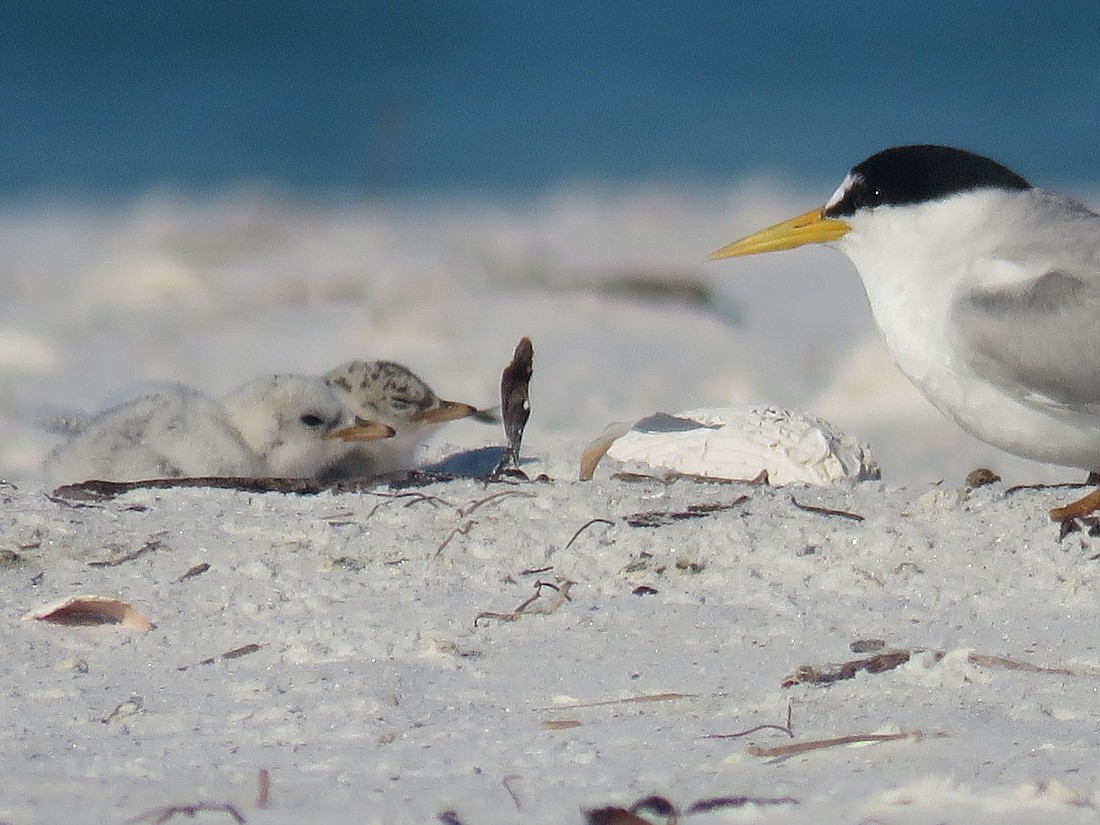- April 23, 2024
-
-
Loading

Loading

Shorebird and seabird nesting season was more productive than last year in Sarasota County and on Longboat Key, said Kylie Wilson, program coordinator for bird monitoring and stewardship at the Audubon Society.
Similar to turtle season, shorebird nesting season runs through the summer but wraps up in September or earlier if birds are successful in early-season nesting.
“Compared to last year, Longboat Key had the most drastic change of any beaches,” Wilson said. “There was less nesting, but the nesting we did have was more productive.”
Least terns were found nesting in a private gravel lot on Longboat instead of their typical Whitney Beach destination.
“Least terns are really well adapted, and most of our terns in Florida actually nest on gravel rooftops,” said Wilson, adding the last of the Lido Beach terns likely flew off for winter homes in South America in late July.
Black skimmers, recognizable by their black backs and white undersides, had the most productive year of the three main types of birds most commonly found nesting on area beaches.
No snowy plovers nested on Longboat Key this year, Wilson said, attributing the change to beach erosion.
Beach-nesting birds lay their eggs in a patch of sand they dig, meaning the eggs then sit right on top of the sand. Human forces like stray soccer balls or dogs on the beach can cause the bird to leave the nest while incubating and gives a predator the opportunity to swoop in and eat a chick, or leaves the eggs open to overheat.
Dogs are a big problem, even though they’re not allowed on beaches in the area. Humans typically don’t think of their furry friends as predators, but to a nesting bird, Fido looks like a coyote. The trash that humans leave on the beaches also attracts raccoons and other predators.
During the summer, the Audubon Society stations volunteer stewards near nests, to educate beachgoers on the nest's presence.